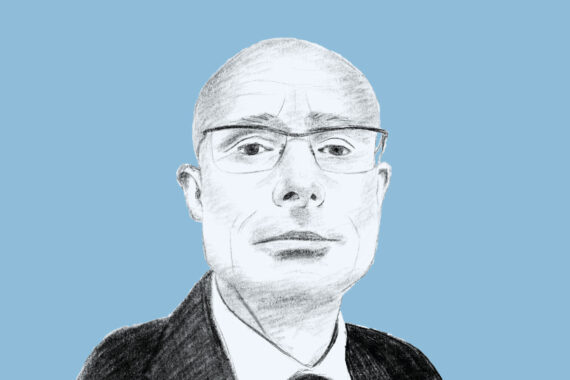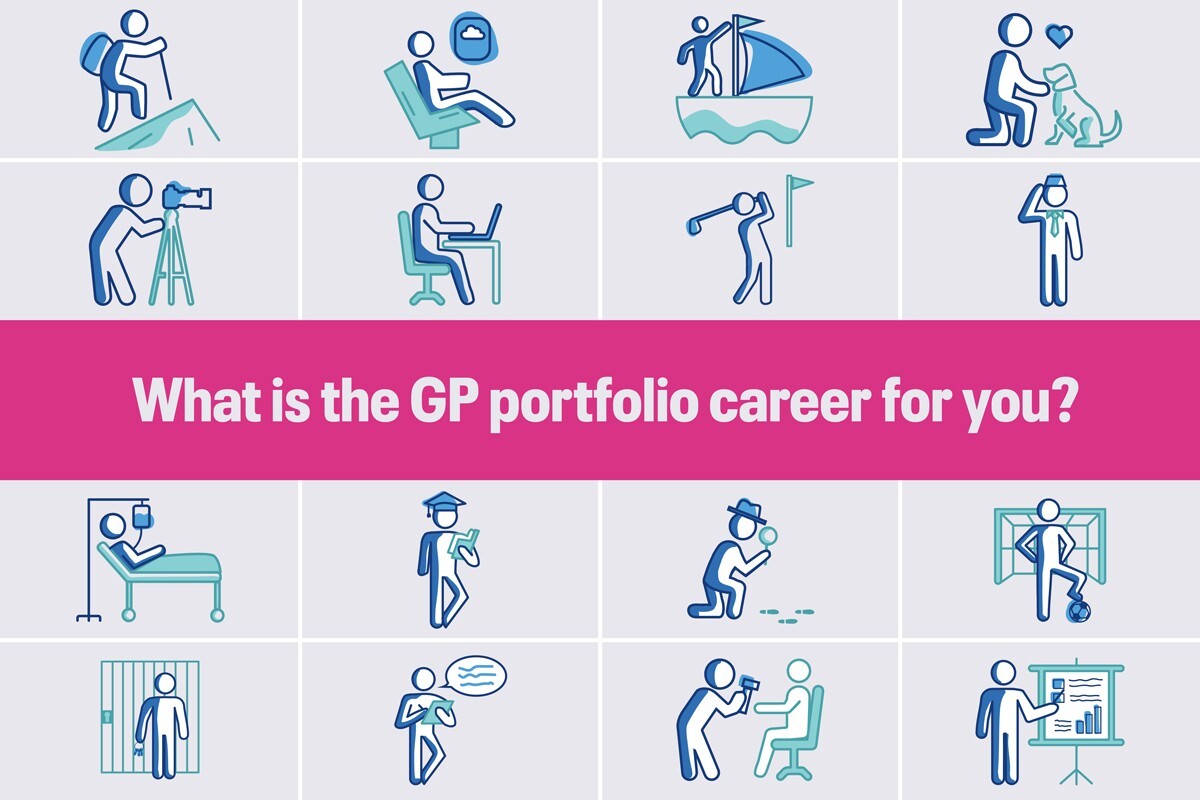Younger GPs don’t know how good we used to have it

Dr David Turner turns the clock back 25 years to see what younger GPs are missing out on
Being a GP is a lonely job most of the time. Yes, we have patients coming in every ten minutes or so, but in between that, most of us spend the time alone in our consulting rooms.
Conferences are one of the few opportunities we get to meet and chat with colleagues of all ages from different parts of the country. At last month’s LMC conference, discussion on the ‘future of general practice’ was (unsurprisingly) rife. How will we survive the relentless demands from patients and secondary care with increasing costs/ever squeezed funding/shoddy premises etc.
But I also found it an interesting opportunity to reflect on the past and compare the work and problems that general practice faces today to what being a GP was like 25 years ago.
Many younger GPs do not realise that family doctors used to be on call for their own patients 24/7. That the GP co-operatives, when set up by neighbouring practices, did alleviate some of this on call burden but a cost. We had to pay money out of our own pockets to run the co-ops and in addition work in them for free to keep them viable. A quarter of a century ago, doing home visits for women who had had normal births was routine, as was visiting the recently bereaved.
In my first practice, most GPs would do three or four visits each every day. That was on top of regular ward rounds to nursing homes, all squeezed into the middle of the working day. We opened every Saturday morning and even when co-operatives existed, we took our own calls from 7pm and would often end up doing a home visit or two on the way into work in the morning.
Most of us still used paper notes, so the back seats of our cars were often strewn with Lloyd George files as we did home visits and took patient records home to dictate referral letters. The concept of ‘phone consultations’ did not exist. I think we GPs rarely phoned patients, unless it was about an urgent blood test result.
With no QOF, CQC, or annual appraisal to worry about though, we did seem to have more time to meet with colleagues over coffee, lunch or at post-grad centre meetings with our secondary care colleagues. We knew many consultants by first name and would dictate referral letters to them personally – and usually receive personal responses. This is something our younger colleagues may find hard to believe, but I cannot recall a single referral being rejected in the first two decades of my career. Nor do I remember any job lists for us to do at the end of hospital letters.
Look, I’m not wearing rose tinted glasses. I’m not suggesting that things in the past were better than they are now. Indeed, many changes have improved the lives of GPs over the last 25 years. But equally, there are lessons and experiences we can take from the past to try and improve our current situation.
You want my take on it? Less admin, less bureaucracy, less micromanagement, and more time spent face to face with our patients/fellow GPs/secondary care colleagues might improve our lot.
Dr David Turner is a GP in Hertfordshire
Portfolio careers
What is the right portfolio career for you?

Related Articles
READERS' COMMENTS [13]
Please note, only GPs are permitted to add comments to articles














Yes indeed this were the days David, despite being busy we had more time to see and treat patients, home visits were providing useful insight into patients lives and good opportunities to practice clinical skills. All the admins, telephone rubbish, appraisals etc, has taken out the satisfaction of being a well rounded clinician . I dread to think than in my time of need I will be treated by AI boot, Dr T Nikolova, GP, Hertfordshire
A good article. Having completed training in 2005 I wouldn’t want to go back to doing 4-5 visits per day plus surgeries with a 24 hour commitment even if we did have ultimate continuity. At least we can close the doors now at 18.30 and attempt to go home. Also with litigation as it is and the hospital system in chaos, I am glad there is a service when we are not in the building
Many GPs did go home or golf for several hours during the day and in the evening:
indeed it is only in last 20 years that so many GPs find themselves still doing paperwork through until 8 or even 10 pm in the surgery!
It dawned on me today too, that whilst we used to meet our hospital colleagues quite often, we cannot even speak them on the phone now, only remote ‘A&G’ people – whom we do not even know if they are really qualified doctors!
I cannot understand why it’s changed.
This describes my early years as a new GP & Partner in 2011.
This changed very quickly by 2013-14.
Nowadays seeing people who work in same building is a bonus and I’m forever chasing targets and paperwork.
I started work in 2002 and I wouldn’t go back. The workload in my first job was higher than it is in my current one. A full session of 7.5 minutes appointments left me exhausted by lunchtime. Then, as David says, the visits. Yes the paperwork was a minor part of the working day but what a working day it was.
A&G – the next step is for AI to trawl through our referrals and reply/give us advice…’bringing care back into the community’….
We also did a lot of useless social visits, unnecessary “emergency” housecalls, and in general pharmacists did not deliver medication. Notes were often unreadable. We worked 32 hour shifts at least once or twice during the week and were on call from Friday morning till Monday evenings. We did all this without the use of mobile phones or GPS in the cars. It was miserable. Today it is miserable in a different way.
A good article but there was no CQC or an abusive GMC and patients did not complain and were more friendly. There was also no micro management. We did not have tons of rules that nobody know and tons of pretty useless mandatory training and there were no no win no fee lawyers.
“Eh lad, you ‘ad it easy. Paradise! We ‘ad to walk to work over broken glass in bare feet, see 100 patients a surgery, 20 home visits a day, hand write our referrals with a blunt pencil, on call 25 hours a day, 8 days a week, 53 weeks a year, no breaks, drink rusty water from a sewer, we ‘ad to pay the government for the privilege to work for the NHS, and when we came ‘ome in the evening our wives would murder us in cold blood and dance on our graves ‘til midnight.
But you tell the young GPs that these days, they don’t believe you”
DB – You had a job in the NHS?! Luxury. We dreamed about an NHS job….after being murdered by our wives, we still had to get up, chew on hot gravel for breakfast……😉
STBFA – Hot gravel? HOT?!? Nirvana, lad! We were grateful for our cold gravel…..if we were lucky to get gravel at all!
Hahaha. Excellent, David B 🤣
I remember my first day as a partner June 10th 1989 . I did my first surgery then all the other partners went off at lunch time to play a Golf competition at their club . I was left to look after all the patients and staff ! Didn’t give it a second thought . Loved those early days . Mobile phone came in 1991 so that helped . On call 1 in 4 and worked for the Doctors deputising service at night to increase income as a junior partner working towards parity ! We were busy but in different ways . You could not do as much for people then . The BNF was pretty thin as well ! I have done 41 years as a Doctor and Locum work has pretty much dried up . I was a partner for 30 odd years and loved it . I feel I have been lucky despite all the hassle mixed in with a very meaningful career . I will enjoy not working/ retirement when I finally hang up the stethoscope. Medicine itself is still very interesting. But very different to what it was 41 years ago